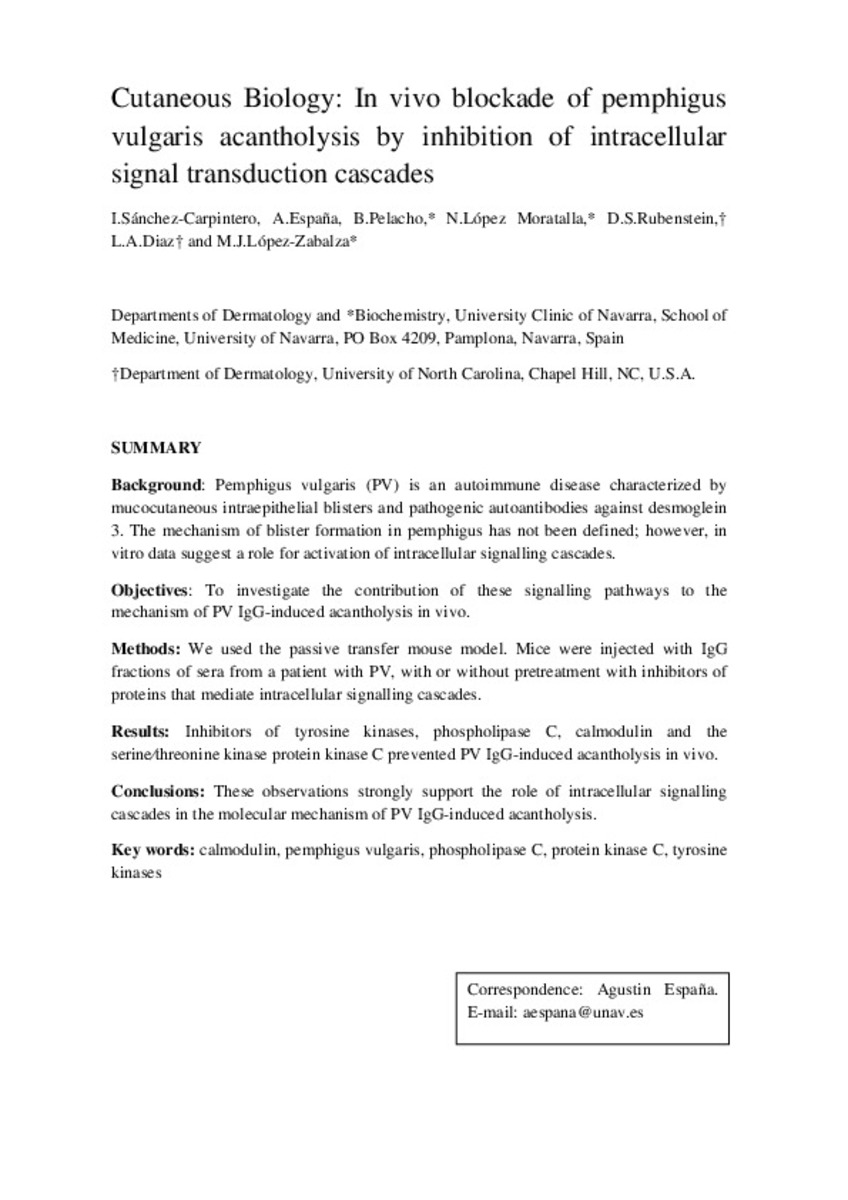Cutaneous Biology: In vivo blockade of pemphigus vulgaris acantholysis by inhibition of intracellular signal transduction cascades
Keywords:
Calmodulin/antagonists & inhibitors/physiology
Immunoglobulin G/immunology
Protein Kinases/physiology
Publisher:
Wiley-Blackwell
Citation:
Sanchez-Carpintero I, Espana A, Pelacho B, Lopez Moratalla N, Rubenstein DS, Diaz LA, et al. In vivo blockade of pemphigus vulgaris acantholysis by inhibition of intracellular signal transduction cascades. Br J Dermatol 2004 Sep;151(3):565-570.
Statistics and impact
0 citas en

0 citas en

Items in Dadun are protected by copyright, with all rights reserved, unless otherwise indicated.







